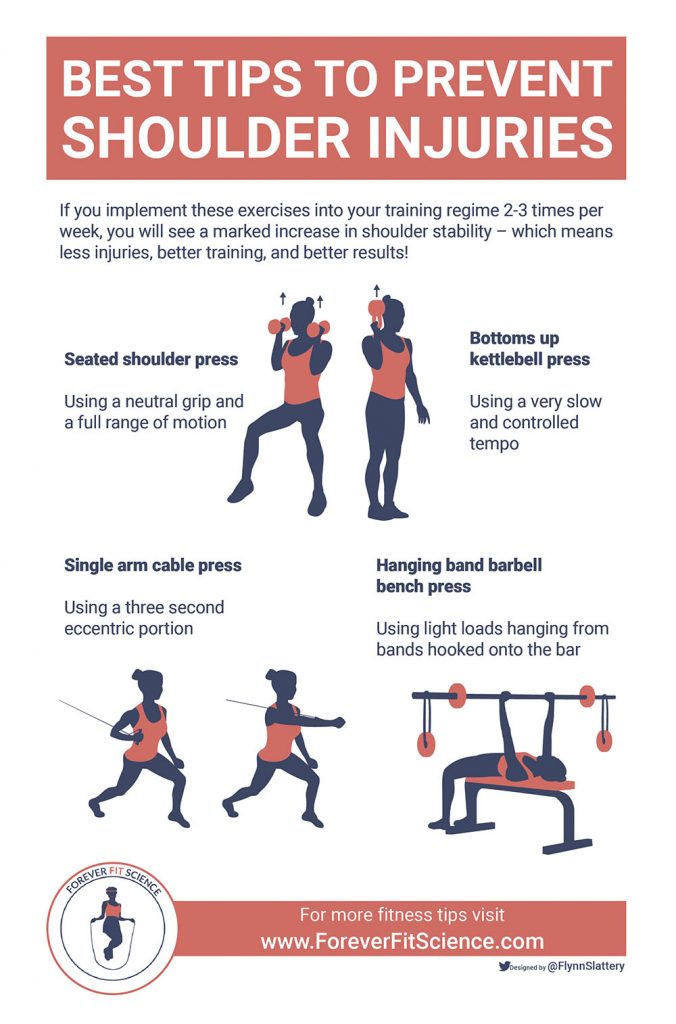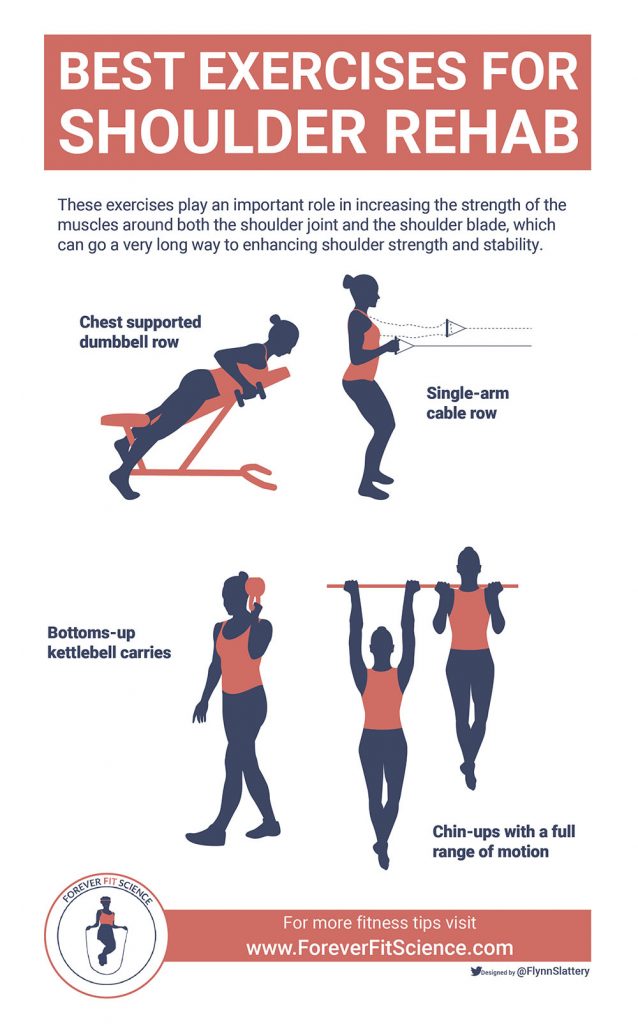Over the last decade, CrossFit has become one of the most popular modes of exercise on the planet.
And really, given the fact that it offers a way to build strength and power, increase endurance and aerobic capacity, and even promote weight loss and muscle growth – and damn quickly at that – it really should come as no surprise.
However, despite its obvious effectiveness, one consistent criticism of CrossFit is that it has a high risk of injuries associated – particularly of the shoulder.
But is this really the case?
What is CrossFit?
CrossFit is a unique type of training that was developed over decades by its sole creator, Greg Glassman.
Where CrossFit sets itself apart from many other types of exercise is because it is performed with the intent to optimize physical competence in ten specific domains of fitness simultaneously, rather than just one in isolation (Claudino, 2018).
These 10 domains include:
- Cardiovascular and respiratory endurance
- Stamina
- Muscular Strength
- Flexibility
- Muscular Power
- Speed
- Neuromuscular Coordination
- Agility
- Balance
- Accuracy
Within this, a single CrossFit session is typically based upon a variety of exercises that are performed for high repetitions and at an extremely high intensity, with little or no recovery time between sets. Moreover, there is a focus on constantly varying functional movement both within sessions, and between sessions, to continually force adaptation.
Taking this into consideration, CrossFit frequently uses gymnastics exercises, weightlifting exercises, more traditional strength training exercises, and a host of different cardiovascular activities, as exercise tasks within daily workouts.
Now, if you consider the way in which CrossFit sessions are put together, it should give you some insight into why it may increase the risk of shoulder injuries occurring – but more on that later.
What common CrossFit exercises involve the shoulder?
So, why in the world might CrossFit have a high rate of shoulder injuries?
Well, to answer this question, we need to consider the many CrossFit shoulder movements that can occur within a session. And trust me when I say that there a hell of a lot!
These include:
- Barbell push press
- Overhead press
- Olympic lifting variations (including cleans, snatches, and their many regressions)
- Barbell rows
- Pull up variations (including strict and kipping pull ups)
- Handstand variations (including handstand push ups and handstand walks)
- Kettlebell presses
- Push ups
- Rowing
- Swimming
See, I told you that were a lot.
It is also important to note that this list only provides the most common shoulder dominant movements that occur within CrossFit workouts. Depending on the session, there is a genuine possibility that some others will exist.
Related Article: Perfecting Your CrossFit Pull-Up
A note on shoulder impingement
Taking all of this into consideration, I wanted to touch on what many consider to be one of the most common forms of CrossFit shoulder pain – being shoulder impingement syndrome (which is commonly known as just shoulder impingement) (Escamilla, 2016).
Shoulder impingement syndrome is a painful condition that is caused by a pinching of the tendons and bursa that sit between the bone of your upper arm (AKA the humerus), and bony arch of you shoulder blade (this arch is known as the acromion).
This common condition is thought to be overuse in nature, in which occurs when the tissues of the shoulder undergo repetitive strain in poor positions. This ultimately means that shoulder impingement is more likely to occur during exercise that involve lots of overhead movements performed for many repetitions – like CrossFit for example.
I should also note that this issue is again more likely to occur if these movements are performed with poor technique, or the individual has some undesirable postural deviations (but more on that later).
So, when we are talking about CrossFit shoulder impingement, it is important to consider a number of factors and make sure that your exercise technique is on point.
What are the causes of shoulder injuries in CrossFit?
With all this information in mind, you might be wondering are shoulder injuries common in CrossFit, or not? And fortunately, a very good quality research study has answered this for us (Summitt, 2016).
This research has shown that shoulder injuries are hands down the most common CrossFit injury. In fact, approximately 25% of all individuals performing CrossFit are likely to experience some sort of shoulder injury per every six months of training.
As expected, this research has also demonstrated that the most common cause of shoulder injury is the result of performing shoulder dominant exercises with poor form. With this in mind, those exercises that appear to be the most dangerous include:
- Snatch variations
- Overhead press variations
Both of which are two of the most technically demanding shoulder exercises on the planet.
Best tips to prevent shoulder injuries
While the research may indicate that shoulder injuries are likely occurrence if CrossFit is your sport of choice, it is important to note that does not mean that they are a certainty. In fact, you can take certain steps to significantly reduce your risk of a shoulder injury occurring.
And it comes down to placing a premium on shoulder injury prevention.
This means implementing shoulder exercises that focus on enhancing shoulder stability. See, by increasing the stability of your shoulder joint, you are going to reduce the risk of performing an overhead movement with poor form. As a result, this is going to markedly reduce your risk of shoulder injury.
Some of my favorite shoulder stability exercises include:
- Seated shoulder press: using a neutral grip and a full range of motion
- Bottoms up kettlebell press: using a very slow and controlled tempo
- Single arm cable press: using a three second eccentric portion
- Hanging band barbell bench press: using light loads hanging from bands hooked onto the bar
If you implement these exercises into your training regime 2-3 times per week, you will see a marked increase in shoulder stability – which means less injuries, better training, and better results!
Best exercises for shoulder rehab
While I am a firm believer that prevention should always be your first point of call, it would be unrealistic to think that injuries will never occur – particularly when performing high intensity exercise like CrossFit.
With this in mind, I also wanted to provide a list of some shoulder rehab exercises you can use help you get over a shoulder injury if one does happen. While quite common, these exercises play an important role in increasing the strength of the muscles around both the shoulder joint and the shoulder blade, which can go a very long way to enhancing shoulder strength and stability.
These exercises include:
- Chest supported dumbbell row
- Single arm cable row
- Chin ups with a full range of motion
- Bottoms up kettlebell carries
As I am sure you would expect, these exercises should be performed with light loads and for slightly higher repetitions initially.
As you are coming back from injury, you want to make sure that you ease into it – and once you have built up a solid foundation of strength, you can transition into the prevention exercise mentioned above, before then returning to full training.
Does stretching prevent shoulder injuries?
Finally, before finishing up the article, I wanted to touch on stretching.
Stretching has long been considered a primary mode of injury prevention. However, over the last few years we have seen it decline in popularity, with some research showing that it may not be quite as effective as first thought.
Despite this, it does appear to have a place in shoulder injury prevention – although not in the way that you might think.
As I alluded to above, some shoulder injuries occur when an individual has a posture that causes them to be stuck in undesirable positions. For most, this means stuck in a position where the shoulders are rolled forward. This limits the ability to get the arms overhead safely (Barrett, 2016; Turgut, 2018).
As I am sure you can imagine, this is going to significantly increase the risk of a shoulder injury occurring.
Now, this poor postural deviation can be caused by two things:
- Tightness in the anterior muscles of the shoulder (think pectorals, anterior deltoids, and latissimus dorsi)
- Limited range of motion of motion at the thoracic spine.
Consequently, there is reason to believe that stretching these tight muscles and implementing thoracic mobility exercises can help you reduce your risk of shoulder injuries occur in a big way. This is accomplished by restoring good posture and improving your ability to get your hands over your head safely.
Related Article: Does CrossFit Have A High Risk Of Injury?
Take Home Message
There is a very good reason as to why CrossFit has become such a popular type of exercise – because it is extremely effective. However, given that it involves a lot of shoulder dominant exercises performed at an extremely high intensity, it does have a high risk of shoulder injuries associated.
But that does not mean it is a death sentence.
In fact, using the tips outlined in this article you can restore your posture, enhance your shoulder stability, and significantly reduce your risk of shoulder injuries from occurring. So what in the world are you waiting for?
References
Claudino, João Gustavo, et al. “CrossFit Overview: Systematic Review and Meta-analysis.” Sports medicine-open 4.1 (2018): 11.
Escamilla, Rafael F., Todd R. Hooks, and Kevin E. Wilk. “Optimal management of shoulder impingement syndrome.” Open access journal of sports medicine 5 (2014): 13.
Summitt, Ryan J., et al. “Shoulder injuries in individuals who participate in CrossFit training.” Sports health 8.6 (2016): 541-546.
Barrett, Eva, et al. “Is thoracic spine posture associated with shoulder pain, range of motion and function? A systematic review.” Manual Therapy 26 (2016): 38-46.
Turgut, Elif, Irem Duzgun, and Gul Baltaci. “Stretching Exercises for Subacromial Impingement Syndrome. Effects of 6-Week Program on Shoulder Tightness, Pain, and Disability Status.” Journal of sport rehabilitation 27.2 (2018): 132-137.
The post Are Shoulder Injuries Common in CrossFit? appeared first on ForeverFitScience.



No comments:
Post a Comment